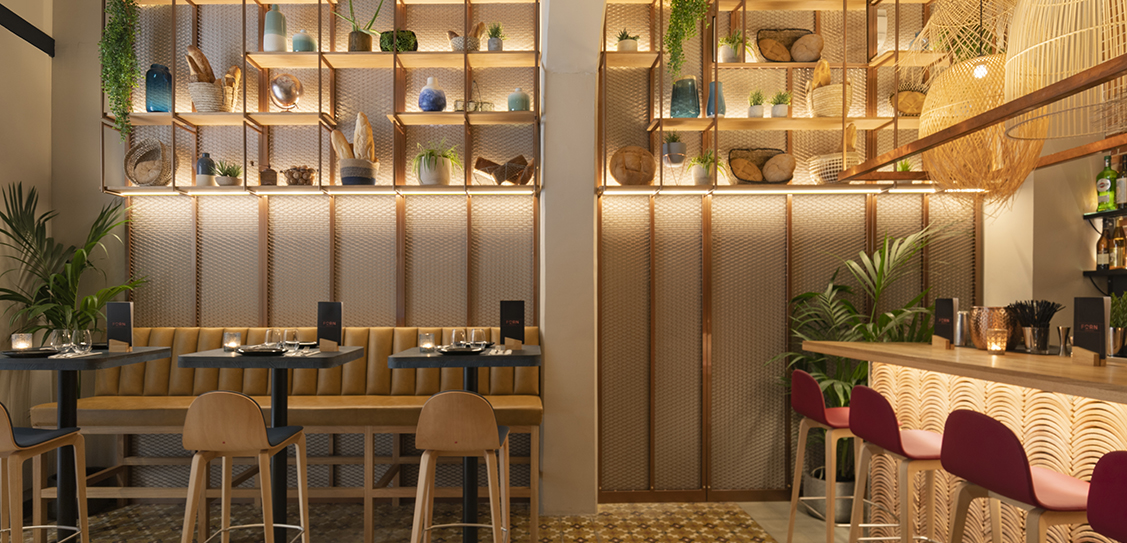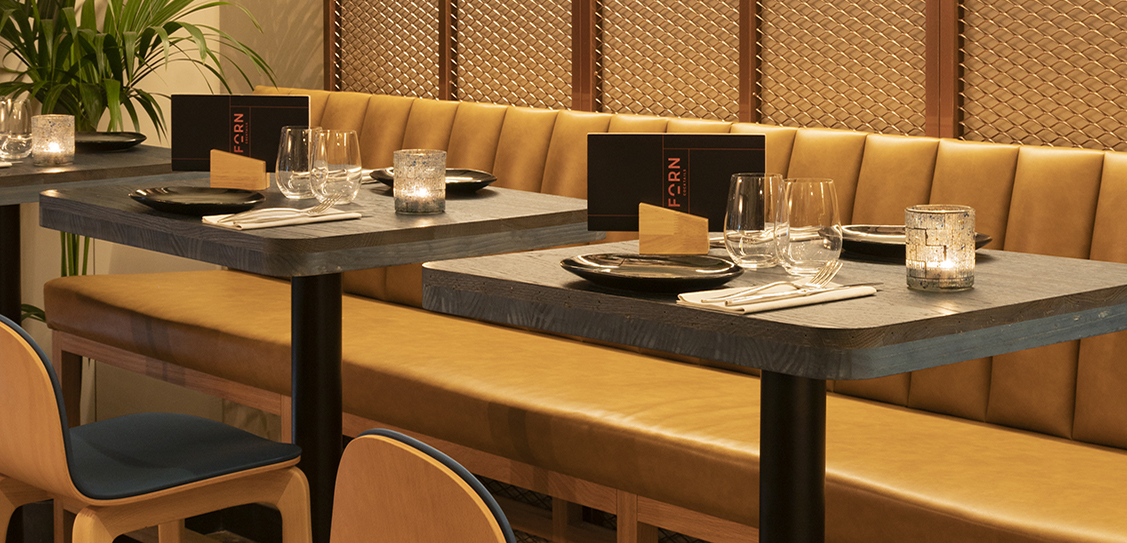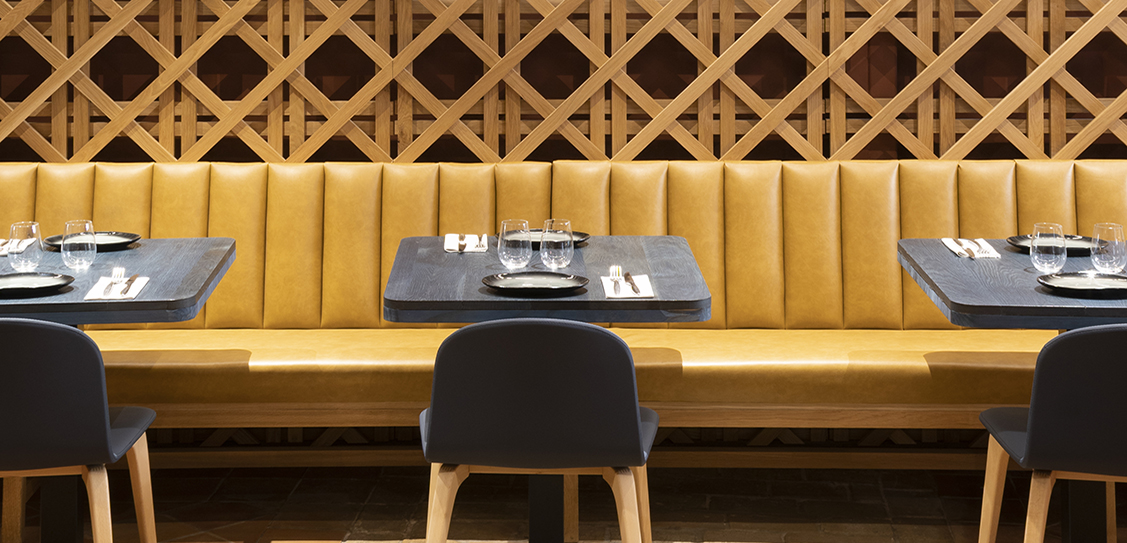The clients, the second generation of a family of hoteliers from Majorca, approached El Equipo Creativo, with the idea of renovating their well-known restaurant located in the Historic Center of Palma, Forn de Sant Joan Restaurant.
From the beginning, what most caught the designers’ attention was the historical and cultural value of the space. The restaurant is indeed a former bakery, “Forn” in Catalan, that still preserves the terracotta structure of its old oven.
The aim was to create a cosy atmosphere that could embody the tradition of the Majorcan Island, values of the restaurant, attention to details and natural products. One of the traditional elements of the old bakery was the “bread basket”. In this context, the art of wicker and handmade basketry, typical craft common to all Mediterranean villages, became one of the main elements of the design. El Equipo Creativo generated a new “woven” skin, as a reference to old wicker baskets, which became the undisputed protagonist of the project. This new skin wraps guests in a metaphorical bread basket, creating a cosy envelope and adding vitality and personality to this space. This fabric gradually fades at its ends, as a metaphor for a basket still in the process of being developed. The skin consists of overlapped wooden strips which create a lattice. This three-dimensional element allowed the designers to adapt to the irregular shape of the space, as well as hide the facilities.
The designers also wanted to feature the idea of the “oven” and “fire”, through the use of different ceramic tiles, such as the use of original terracotta roof tiles to form the bars or copper metal for the shelves. The walls are painted with a reddish hue that recalls the terracotta oven in the bakery. The contrast is given by employing chairs, some in wicker, and others in an intense turquoise tone, similar to the Mediterranean Sea.
In the entrance area is the former terracotta oven. In this double-height space, the design references other characteristic elements of the old bakeries, such as their infinite shelves full of products and curious objects. With this concept in mind, the large shelves full of ingredients, ceramic jugs, small objects and craft tools recalls the pantry of a bakery where something is always happening. They also provide a sense of closeness, love for quality and detail, stressing the philosophy of the restaurant. The copper shelves work as a metaphor for fire and also reminds of the traditional pots of the old kitchens. The bar built with original terracotta roof tiles and the large basketry lamps complete the design of this more informal area that serves as a filter to the main dining room.



